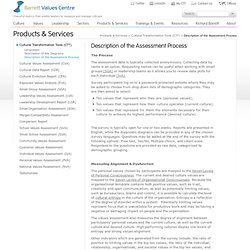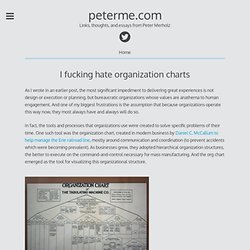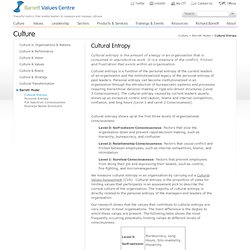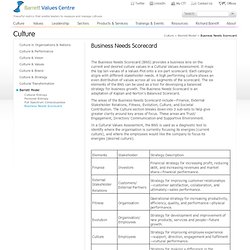

Articles. Barrett Values Centre. The Process Survey participants log on to a password-protected website where they may be asked to choose from drop down lists of demographic categories.

They are then asked to select: Ten values that represent who they are (personal values); Ten values that represent how their culture operates (current culture);Ten values that represent for them the elements necessary for their culture to achieve its highest performance (desired culture). The survey is typically open for one or two weeks. Reports are presented in English, while the diagnostic diagrams can be provided in any of the chosen survey languages. Measuring Alignment & Dysfunction. I fucking hate organization charts : peterme.com. As I wrote in an earlier post, the most significant impediment to deliverIng great experiences is not design or execution or planning, but bureaucratic organizations whose values are anathema to human engagement.

And one of my biggest frustrations is the assumption that because organizations operate this way now, they most always have and always will do so. In fact, the tools and processes that organizations use were created to solve specific problems of their time. One such tool was the organization chart, created in modern business by Daniel C. McCallum to help manage the Erie railroad line, mostly around communication and coordination (to prevent accidents which were becoming prevalent). As businesses grew, they adopted hierarchical organization structures, the better to execute on the command-and-control necessary for mass manufacturing. From mwichary The reason I fucking hate organization charts is because they are emblematic of how broken standard business practice is. Internet training. MyStrategicPlan Strategy Development & Execution Software. Go Team: The Next Iteration of Leadership at Adaptive Path.
In the last six months, Adaptive Path has undergone a lot of change.

This hasn't always been a comfortable place to be during that time. But to make sure we are evolving to be the organization that will continue to deliver great experiences for the next ten years, we know change is crucial and it isn't always going to feel good. Some of the differences have felt great — new studio spaces, a fresh new website, and more recently, some evolutions in our leadership. Let me tell you a bit about the latter. Well, that felt wrong and weird We've been trying the CEO-as-lone-leader approach for the past few years and while it served us well for awhile, it hasn't felt right as we thought about and planned for the future.
There's always a lot going on in our three studios and wherever our work takes us. With the CEO-at-the-top approach, things have felt a little un-us. Okay, this feels right and good What does feel right with our mission and this diversely talented group is a team approach. What? Barrett Values Centre. Cultural entropy is the amount of energy in an organisation that is consumed in unproductive work.

It is a measure of the conflict, friction and frustration that exists within an organisation. Cultural entropy is a function of the personal entropy of the current leaders of an organisation and the institutionalized legacy of the personal entropy of past leaders. Personal entropy can become institutionalized in an organisation through the introduction of bureaucratic systems and processes requiring hierarchical decision-making or rigid silo-driven structures (Level 3 Consciousness). The cultural entropy caused by current leaders usually shows up as excessive control and caution, blame and internal competition, confusion, and long hours (Level 1 and Level 2 Consciousness).
Cultural entropy shows up at the first three levels of organizational consciousness: Our research shows that the values that contribute to cultural entropy are very similar in most organisations. Barrett Values Centre. The Business Needs Scorecard (BNS) provides a business lens on the current and desired culture values in a Cultural Values Assessment.

It maps the top ten values of a Values Plot onto a six-part scorecard. Each category aligns with different stakeholder needs. A high performing culture shows an even distribution of values across all six segments of the scorecard. The six elements of the BNS can be used as a tool for developing a balanced strategy for business growth. The Business Needs Scorecard is an adaptation of Kaplan and Norton’s Balanced Scorecard. The areas of the Business Needs Scorecard include—Finance, External Stakeholder Relations, Fitness, Evolution, Culture, and Societal Contribution. DTalksServiceDesign.pdf - Powered by Google Docs. New Ground Coaching. Handbook of organizational behavior. Handbook of Organizational Culture ...